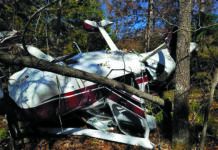The Cam Crisis (Cylinders, Cranks and Guides, Too)
Ho-hum, another week another cylinder recall. Thats a bit of an exaggeration, I guess, but not by much. Considering the number of recalls, ADs and service bulletins that zing by, you have to wonder if weve forgotten how to make airplane parts in the is country. When I started flying in 1969, I only vaguely recall any parts call backs. Of course, I was too poor to own an airplane then and when youre in the renter loop, you don’t notice such things.

131
And noticing or not noticing them may be part of the problem here. As I was researching the article on camshafts in this issue, I asked a couple of the engine shops I know if parts quality has gotten really bad lately or are we just noticing it more. They seemed to be of the universal opinion that things are worse than ever with regard to manufacturing shortfalls making it into the supply chain. Thats not the same as saying quality control is worse than ever because quality is, by its major definition, consistency. My guess is that parts built today are more uniformly on spec than they were 30 years ago or even a decade ago.
So why all these recalls? My theory is that statistical process control has something to do with it. This method of quality control works great in the kind of volumes that the auto industry does. I don’t think its quite so hot when the volumes sink to the dozens and hundreds that GA manufacturers typically do. Even though both Lycoming and Continental have largely converted to CNC equippage, there’s still far more handwork in airplane building than in carmaking.
When quality is based on statistical likelihoods, direct inspection of parts is minimized. Therefore, if the machine is set up wrong or the foundry used the wrong alloy for the raw casting, it might slip by because of limited inspection. A foundary that does a run of 3000 cylinders operates in a different universe than one that squirts out 100,000 engine blocks for Toyota. Small run QC has always been a daunting challenge.
Thats the only way I can think of to explain Continentals letting some 9000 cylinders slip by with a thin casting in places where everyone knows these cylinders typically crack. In days or yore, a skilled machinist with a micrometer and calipers actually laid hands on the parts. Now he lays hands on a keyboard, which tells a machine what to do and the machine then tells another computer what it did. The part is assumed to be right because a report somewhere says as much. If it only worked out that way.
If I Had a Cardinal
Speaking of 1969, when I was in Ada, Oklahoma, shooting the Cardinal for the report on page 4 of this issue, that year popped into my head. It was probably 1970, now that I think of it. At the Fort Bragg Flying Club, an instructor named Joe Brossard loaded three of his students-I was one-into a spanking-new fixed-gear Cardinal. I can clearly recall the smell of warm paint emanating from the engine and the eyeball vents struck as me being just like an airliner. It was fabulous.
At the time, I thought the Cardinal was the sleekest airplane Id ever seen. And you know what? Nearly 40 years later, it still is. The raked back windshield and strutless wings on the RG model I shot for the report on Tornado Alleys turbo project look as good as anything Cirrus or Diamond make today. The interior? Well, its not quite that tacky crushed velour Piper favored, but nothing looks more dated than cracked Royalite.
So if I had one of these things or wanted to buy one, after the turbo upgrade, Id throw about 15 grand at the cabin. Tear out the panel Royalite and replace it with powder-coated metal, then cover the rest of the plastic with a tasty fabric. Id ship the seats out to Oregon Aero for refoaming and install some modern seatbelts. Id then have thoroughly modern looking, comfortable airplane with an honest 175-knot cruising speed. And the typical bystander wouldnt have a clue that the thing was built when Nixon was in the White House.





